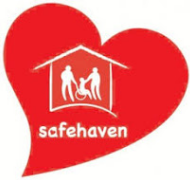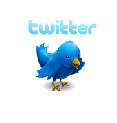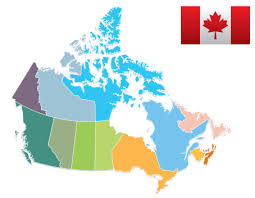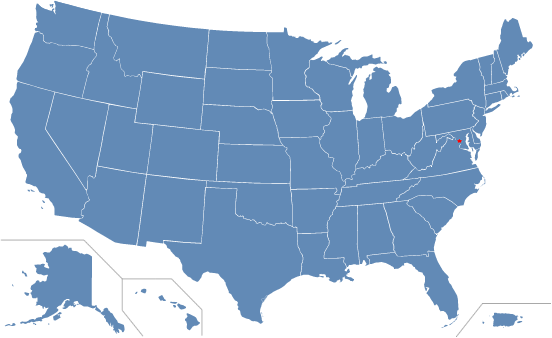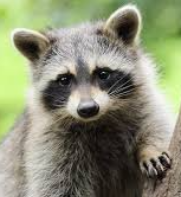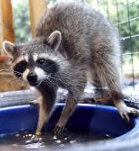ORGANIC SUPERSTORES for
VALUE-ADDED FOOD PRODUCTS
416 769-7700
Take The Farm Worker Challenge & Or The Farm Helpers Challenge
do unto others as you would have them do unto yourself
+
MTM Sales & Marketing Specialist + SEO Consultant
I LOVE
Mark Mueller, B.B.M.
Je parles français! + Ich spreche Deutsch! + Yo hablo español!
MORE WEB-BASED SERVICES
With MARK MUELLER

- SEO (Search Engine Optimization or Optimisation): Creating a user-friendly web page for humans and web bots with the goal to be first in the page rankings of search engines.
Search term: The keyword or keyword phrase to be typed into the search request. - Page ranking: Where a web page is found in a search result, determines its rank.
- Relevance: Search terms repeated to show the legitimacy of an offer. Google and other search engines want the REAL DEAL. The tips will help you to communicate this, since you are the real deal.
Web bots or web crawlers: Programs created by the search engine to surf the Internet, to gather and store data about the content of each website. - Algorithms: These are programmed instructions that control the web bots through a myriad of instructions that will influence how a website will perform on its search engine.
- url: This is the website pathway that is shown in the address bar and starts with the domain name. The extension contained therein should be written in text form at or near the top of the page.
- Top Level Domain (TLD): Domain names with the following extensions: com, net, org, info, biz and co.
Meta tags: A precis that tells what the web page is about. The link to click on in a search request is the Title Meta tag that has be assigned while the written passage shown under this is the Description Meta tag. - Image tags: Text that describes and image using Title and Subject tags are just two of many descriptor tags attached to the images. This SEO tactic is recommended as it encourages the web bots to read (reinforcing important keywords that are written within the text of the web page.
Always remember ...
Most times I am not near this phone so please leave a voice-mail message, thank you.
Following are some surefire ways to “schmooze” with the bots:
The ultimate goal of SEO is to have your website rank first in the search results. For business online, presenting the CALL TO ACTION (CTA) is important because you are telling them what to do next. Remember that if there is no immediate gratification when a potential customer or client responds to the CTA, they will move on to the next entry because they can easily do so.
STARTING OUT: Domain Name Selection
When building a new website, the best domain name for a hosting site is the dot com (.com). In fact, it would be ideal to secure the rights to all the top level domain names (TLDs).
There are four categories of TLDs in the order of SEO strength:
The ultimate goal of SEO is to have your website rank first in the search results. For business online, presenting the CALL TO ACTION (CTA) is important because you are telling them what to do next. Remember that if there is no immediate gratification when a potential customer or client responds to the CTA, they will move on to the next entry because they can easily do so.
STARTING OUT: Domain Name Selection
When building a new website, the best domain name for a hosting site is the dot com (.com). In fact, it would be ideal to secure the rights to all the top level domain names (TLDs).
There are four categories of TLDs in the order of SEO strength:
1. dot com (.com) - this is the best domain name to have
2. dot net (.net) - Casting a "net" to gather customers
3. dot org (.org) - not-for-profit and is short for “organization”
4. dot info (.info) - sharing information
dot biz (.biz) - business theme
dot co (.co) - company or commercial theme
2. dot net (.net) - Casting a "net" to gather customers
3. dot org (.org) - not-for-profit and is short for “organization”
4. dot info (.info) - sharing information
dot biz (.biz) - business theme
dot co (.co) - company or commercial theme
Although dot ca (.ca) and dot us (.us) are country codes and not TLDs they can also be effective for SEO.
When all the other TLDs are taken, most often they are parked and are of no competitive concern. However, even the least powerful TLDs can be forwarded to your website. When integrated correctly, this tactic can help give an SEO boost to climb to and/or maintain top spot in the page rankings. It is like buying search terms.
BUILDING WEBSITE CONTENT TO CLIMB TO THE TOP OF THE SEARCH
Two rules for successful SEO:
When all the other TLDs are taken, most often they are parked and are of no competitive concern. However, even the least powerful TLDs can be forwarded to your website. When integrated correctly, this tactic can help give an SEO boost to climb to and/or maintain top spot in the page rankings. It is like buying search terms.
BUILDING WEBSITE CONTENT TO CLIMB TO THE TOP OF THE SEARCH
Two rules for successful SEO:
SEO = Search Engine Optimisation and Search Engine Optimisation
We are pleased to recommend these amazing businesses
SEO Only Works When One Does The Work
Here are the tips on SEO (website Search Engine Optimization), which will help you to obtain high page rankings on Google and other search engines.
To begin, these are some common terms that will be useful to better understand the tips that follow:
To begin, these are some common terms that will be useful to better understand the tips that follow:
To be #1 for the desired search term’s page rankings, means that the search terms strive to be in alignment with the algorithm of the search engine. Providing this legitimate RELEVANCE will give you the SEO edge over the competition.
To secure and maintain that edge, build the website well from the start, or, remodify the existing text and tags, using the tips prescribed herein. It is imperative to continuously devise new tactics that will enhance the presentation for the search engines’ web bots.
A website, being much like a CV or resume whose purpose it is to get the interview, is to spur a prospective Customer or Client to respond to your desired Call to Action (CTA). Dressing up the website design and layout has an impact on SEO performance in terms of engaging the (prospective) Customers, yet given their importance, the focus should be on the web bots as the primary target market in the quest for superior SEO.
To secure and maintain that edge, build the website well from the start, or, remodify the existing text and tags, using the tips prescribed herein. It is imperative to continuously devise new tactics that will enhance the presentation for the search engines’ web bots.
A website, being much like a CV or resume whose purpose it is to get the interview, is to spur a prospective Customer or Client to respond to your desired Call to Action (CTA). Dressing up the website design and layout has an impact on SEO performance in terms of engaging the (prospective) Customers, yet given their importance, the focus should be on the web bots as the primary target market in the quest for superior SEO.
This is just the top of the iceberg.
Inch By Inch, Life Is A Sinch
BTW ... You can always connect with Mark
Togwethern we can figure it out; I strive trio be halpful
Call 416 769-7700
1. If the "Search Term" (word or sequence of words) is not written, it is not possible to compete for this search term in organic searches. For example, “High Park Condos” does not equal “High Park Condo,” although the latter is contained within the former’s character string.
Desired Search Terms = What is the Customer going to type in to find you? You know your customer or potential customer or client best, so you are the best person to identify which search terms rank highest.
2. What is first, must be more important than what follows. By placing the most important word(s) first, the degree of RELEVANCE is created, which is essential for the bots that function with a binary logic: 0 or 1; yes or no. The bots are like elephants, they are programmed to never forget!
Two Notes of Caution:
1. PLAGIARISM will kill any opportunity for a web page to achieve good organic or natural SEO performance. For example, in real estate sites many take the exact words presented by the main brokerage and reproduce it on their Buying Real Estate page. It would be better to link to the brokerage page. Even better, rewrite the text in one's own words.
For example, to avoid plagiarizing a statement such as, “The red house on the hill.” It could be rewritten as: “The house on the hill is red.” To check for plagiarism, simply copy and paste the passage into a Google search.
Image tags are excellent in that they give the opportunity to mention, “red house” more than once. The more a term is repeated legitimately causes it to "trend." Yet be careful not to over-use the word, instead use variations. This includes videos and closed captioning too, which get converted into written form.
2. LINK FARMING will shut down an entire website. According to WhatIs.com, it is defined as, “A link farm is a website (or a group of websites) created only for the purpose of increasing the link popularity of another site by increasing the number of incoming links.”
In other words, it is a website that might have a header and a footer but there is no content in the body. If there is content, it doesn’t link to anything of RELEVANCE. These tactics are known as black hat SEO which is used to generate traffic to that website via increasing the number of backlinks. Thus the analogy of “farming.” When that happens, the search engine’s program blacklists the website.
Mistakes can happen, diminishing SEO strength or, worst case scenario, being shut down or blacklisted. However, the web bots are forgiving when mistakes are caught early enough. We can coach more about this aspect of protecting the online brand.
Desired Search Terms = What is the Customer going to type in to find you? You know your customer or potential customer or client best, so you are the best person to identify which search terms rank highest.
2. What is first, must be more important than what follows. By placing the most important word(s) first, the degree of RELEVANCE is created, which is essential for the bots that function with a binary logic: 0 or 1; yes or no. The bots are like elephants, they are programmed to never forget!
Two Notes of Caution:
1. PLAGIARISM will kill any opportunity for a web page to achieve good organic or natural SEO performance. For example, in real estate sites many take the exact words presented by the main brokerage and reproduce it on their Buying Real Estate page. It would be better to link to the brokerage page. Even better, rewrite the text in one's own words.
For example, to avoid plagiarizing a statement such as, “The red house on the hill.” It could be rewritten as: “The house on the hill is red.” To check for plagiarism, simply copy and paste the passage into a Google search.
Image tags are excellent in that they give the opportunity to mention, “red house” more than once. The more a term is repeated legitimately causes it to "trend." Yet be careful not to over-use the word, instead use variations. This includes videos and closed captioning too, which get converted into written form.
2. LINK FARMING will shut down an entire website. According to WhatIs.com, it is defined as, “A link farm is a website (or a group of websites) created only for the purpose of increasing the link popularity of another site by increasing the number of incoming links.”
In other words, it is a website that might have a header and a footer but there is no content in the body. If there is content, it doesn’t link to anything of RELEVANCE. These tactics are known as black hat SEO which is used to generate traffic to that website via increasing the number of backlinks. Thus the analogy of “farming.” When that happens, the search engine’s program blacklists the website.
Mistakes can happen, diminishing SEO strength or, worst case scenario, being shut down or blacklisted. However, the web bots are forgiving when mistakes are caught early enough. We can coach more about this aspect of protecting the online brand.
